50 years ago, Porsche introduced the Turbo model designation to the 930 generation 911. At the time, when the world faced an oil crisis, Porsche was planning for the future—one that highlighted their technical progress as an automaker while also bridging a direct link between their success on the racetrack and the showroom floor. The resulting 911 Turbo brought with it not just a stronger motor, but also a myriad of upgrades to maximize the potential of the 911 platform. Turbo, in Porsche parlance, is born.
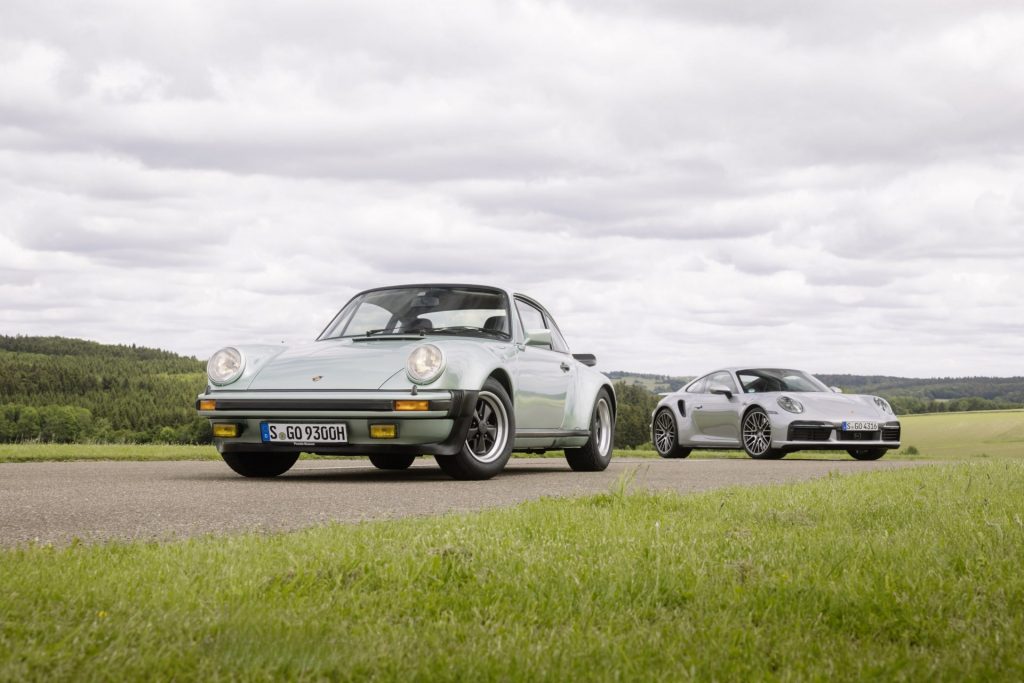
In 1974, Porsche described the 911 Turbo as the “crowning glory of a proven concept.” True enough, it served as the direct result of their experimentation with turbocharging which started as early as the late 1960s. Originally intended to serve merely as a homologation requirement to race, Porsche delivered four hundred 911 Turbos by the end of its first full year of production. A year after that, the number went up to over a thousand.
The first-ever 911 Turbo went down in history as the world’s first series-production sports car with an exhaust-gas-controlled turbocharger. And one of the fastest cars of its time. What set it apart from its competitors was its unrestricted day-to-day usability in combination with its luxurious interior equipment. In the press release from September 1974, Porsche emphasized the “refined power” and “exclusive sportiness” of the 260-horsepower sports car.
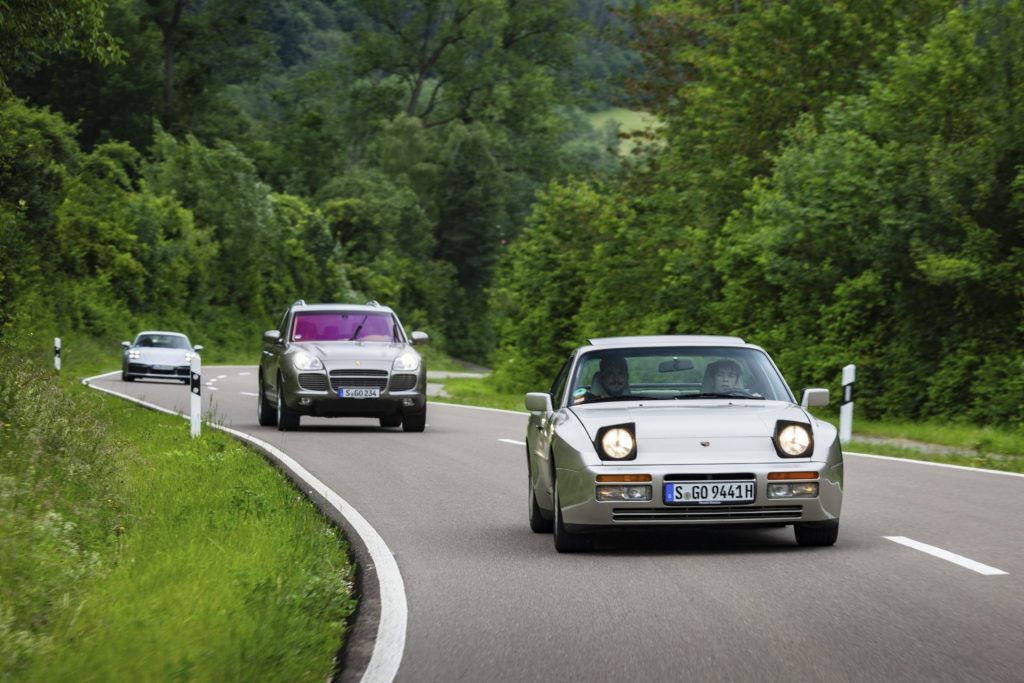
Since then, the Turbo has gone beyond the engine. It’s become synonymous with the range-topping Porsche models and is no longer solely linked to the 911. Turbo has made it to other Porsche models such as the Porsche 924 Turbo in 1979, the Porsche 944 Turbo in 1985, and the first 944 Turbo S three years later. The Cayenne Turbo was launched in 2002, and the even more powerful Turbo S in 2005. When Porsche launched the Panamera range in 2009, the first Turbo appeared the same year. Four years later, came the top Turbo S variant. Finally, Porsche released the Macan Turbo in 2014.
Five years ago, the Turbo moniker appeared for the first time in the all-electric Taycan. While not equipped with an actual exhaust turbocharger, the Taycan Turbo and Taycan Turbo S earned the model designation by being the spearhead of Porsche E-Performance. They were, after all, the most powerful serial production Porsches at the time.
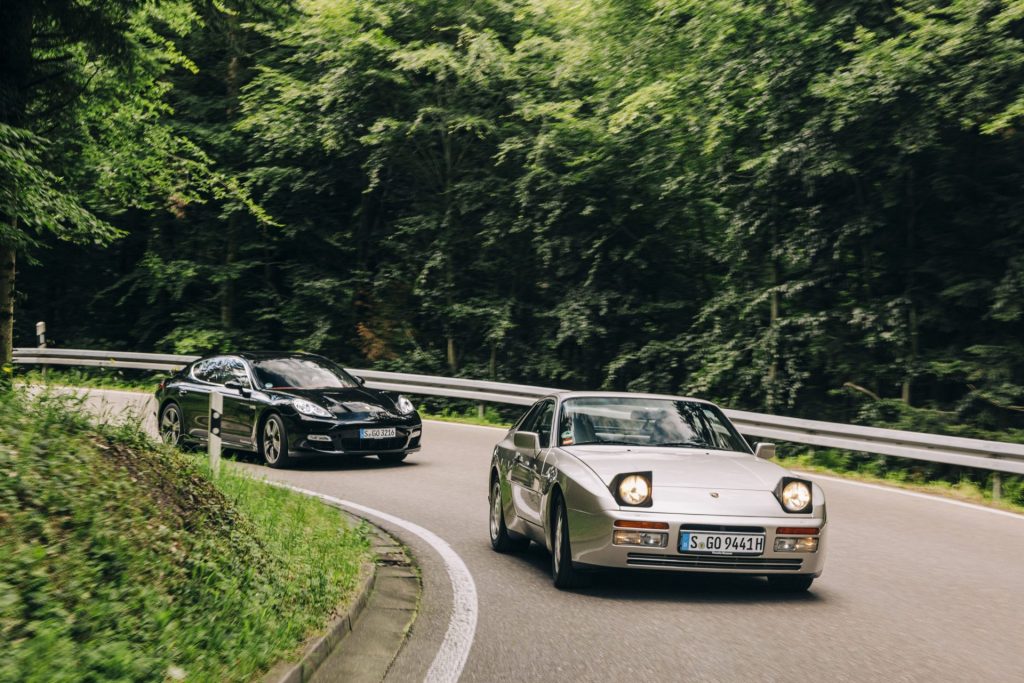
And while more track-focused motorsport-inspired serial production cars have come out of Porsche, the Turbo continues to combine uncompromising sportiness and everyday usability uniting dynamics, tradition, and innovation.
Motorsport has always been firmly anchored in the brand’s DNA. Porsche tests its mettle against the competition on the track, where lap times are measured and where the driver and the machine face the challenges of a race head-on. Porsche then compresses the knowledge from motorsport to its essence and incorporates it into its next sports car. To this day, the sports car manufacturer has retained the idea of first testing new technology, on the race tracks of the world before they enter serial production.
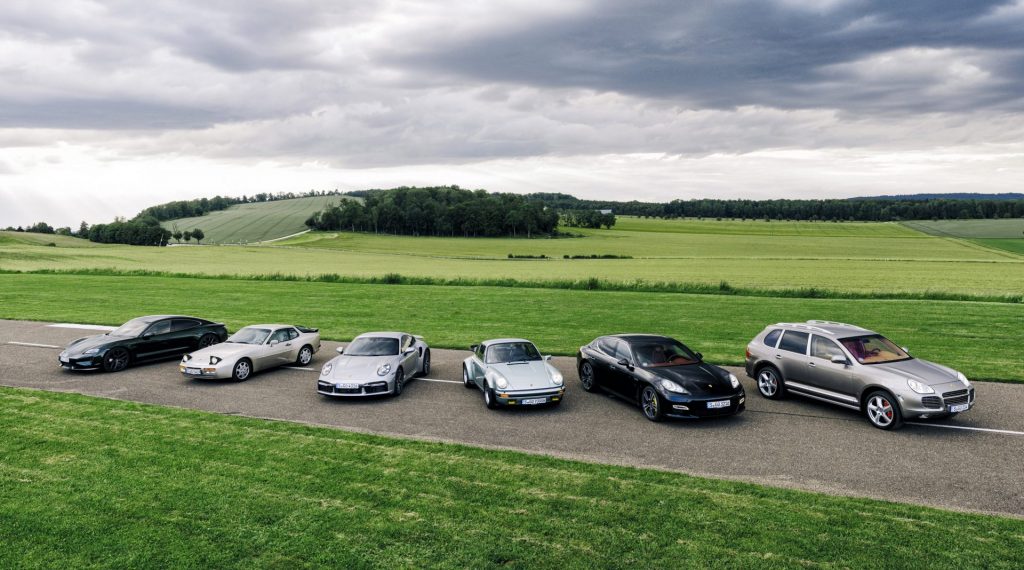
Turbo calls up images of extravagant rear wings and wheelarches, lightweight construction, air vents between doors and rear wheels, and particularly sporty equipment. People think of special editions that deliver power and speed in dramatic fashion. While all true, above all, Turbo means a wealth of innovations that push engineers ever closer to the limits of what’s possible from a charge-air cooler located below the rear spoiler in the second-generation 911 Turbo, ceramic composite disc brakes in the 996-generation 911 Turbo, to the first series-produced petrol-powered car outfitted with Variable Turbine Geometry in the 997-generation 911 Turbo.
The difference between a Turbo and a non-Turbo is not just something you can see—more than anything, it’s something you feel. The Turbo always fulfilled Porsche’s desire for high-performance coupled with efficient use of power. Constant technical evolution has always been the most important secret of success for any Turbo model from Zuffenhausen. The one that brings it closer to the ideal of a sports car than any before it.
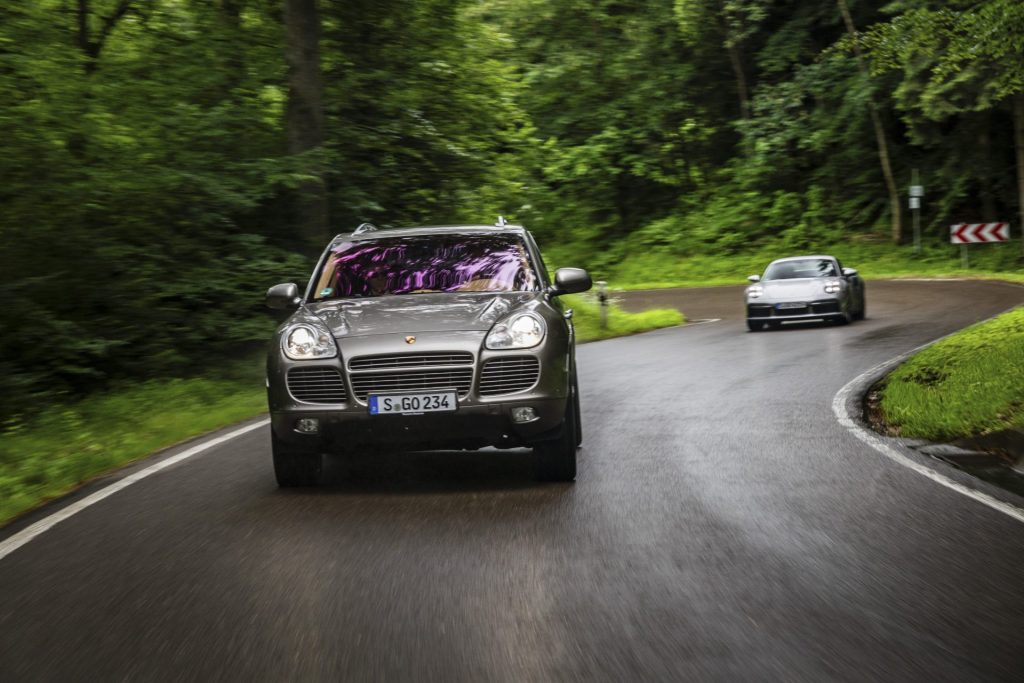
The Turbo principle has marked the frontier of what is possible at Porsche for half a century. Turbo is far more than just a model designation; it carries within it all the victories that Porsche has celebrated on the race tracks of the world.
A Turbo from Zuffenhausen—the mere thought of it is enthralling for many. It’s a captivating vision of the ultimate connection between the driver and the road—the very embodiment of a sports car. Turbo stands for an intense driving experience, for sportiness paired with day-to-day usability, for experience and success. A Turbo always represents the limit of what is feasible. As the Turbo dynamically connects one with the road, the driver feels connected with it in turn. Turbo means a history that goes back 50 years to its roots—with origins in motorsports more than 50 years. It is a technology platform and a sportscar with uncompromising capability.

